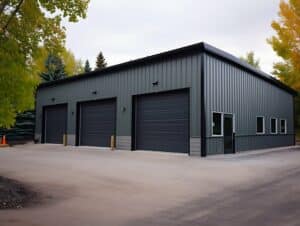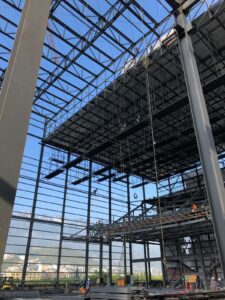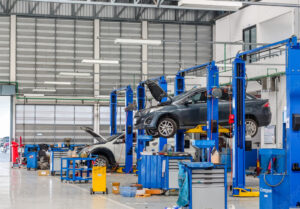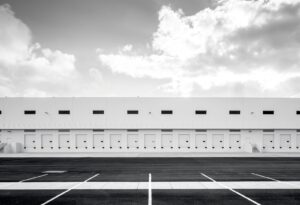Mini storage buildings have become a popular investment option for various individuals and businesses. With the increasing demand for storage rental spaces, understanding the costs and financing associated with these projects is crucial for accurate planning.
According to Sparefoot, the popularity of storage buildings is on the rise. They report that there are over 52,000 self-storage facilities in the U.S., with approximately 11.1% of households renting a storage unit at an average monthly cost of $85.14 as of March 2024.
Additionally, the average monthly occupancy rate is 83.85%, which is notably high.
In this article, we will provide a comprehensive overview of mini storage building costs, discussing various aspects such as the basics of mini storage buildings, factors influencing costs, financing options, cost-saving strategies, and future trends.
Table of Contents:
- Understanding the Basics of Mini Storage Building
- Detailed Breakdown of Mini Storage Building Costs
- Financing Your Mini Storage Building Project
- Cost-Saving Strategies for Mini Storage Building
- Future Trends in Mini Storage Building Costs
- Conclusion
- Frequently Asked Questions
Understanding the Basics of Mini Storage Building
Mini storage buildings, also known as self-storage facilities, are purpose-built structures designed to provide storage space for individuals and businesses. These buildings consist of multiple individual storage units that are rented out to tenants every month.
Apart from the physical units, a mini storage building may also include amenities like security systems, climate control, and convenient access points.
When considering a mini storage building, it’s important to understand the versatility it offers. These buildings can cater to a wide range of storage needs, from temporary storage during a move to long-term storage for seasonal items. The flexibility of mini storage buildings makes them a popular choice for individuals and businesses alike.
What Is a Mini Storage Building?
A mini storage building is a commercial property specifically designed to accommodate storage units of various sizes. These buildings are typically made of steel or concrete with secure doors and individual lockable compartments.
From household belongings to business inventory, mini storage buildings serve as a reliable solution for storing a wide range of items.
Moreover, the layout and design of a mini storage building are crucial aspects to consider. Efficient use of space, ease of navigation within the facility, and adequate lighting are all factors that contribute to a positive storage experience for tenants.
A well-designed mini storage building maximizes usability and ensures that tenants can access their belongings conveniently.
Key Factors Influencing Mini Storage Building Costs
The cost of constructing and operating a mini storage building can vary depending on several factors. The location of the building, size of the units, construction materials used, and additional features all play a role in determining the overall costs. Additionally, factors such as land acquisition, permits, and utility connections should also be considered when estimating the financial outlay for a mini storage building project.
Furthermore, it’s essential to factor in ongoing operational costs when planning a mini storage building project. Expenses such as maintenance, security, insurance, and marketing should be budgeted to ensure the long-term sustainability of the facility. By carefully analyzing both the initial construction costs and the ongoing operational expenses, developers and investors can make informed decisions when venturing into the mini storage building industry.
Check out: Breaking Down The Cost To Build Self-Storage Facilities
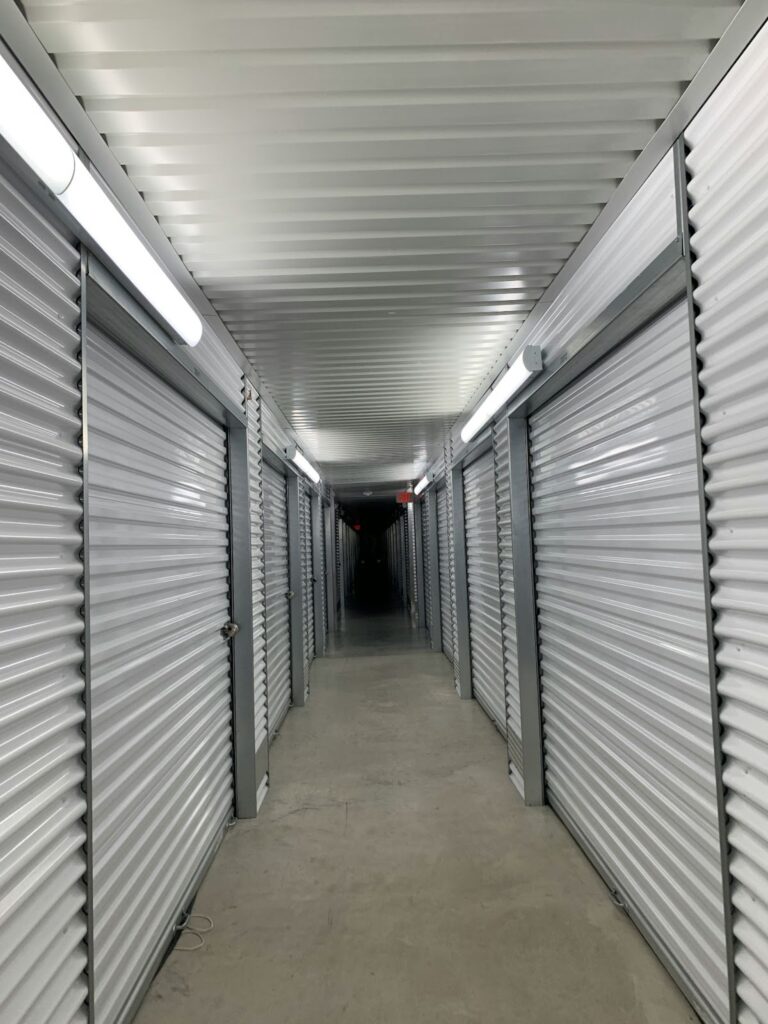
Detailed Breakdown of Mini Storage Building Costs
When it comes to estimating the costs of a mini storage building, it is important to consider the various components involved. Here, we will break down the costs into three main categories: land acquisition and preparation, construction and material, and operational and maintenance costs.
Land Acquisition and Preparation Costs
Before construction can begin, the land on which the mini storage building will be located must be acquired. The cost of land varies depending on the size, location, and market demand.
It is crucial to carefully assess potential locations and consider factors such as accessibility, proximity to residential areas, and competition from existing storage facilities.
Additionally, site preparation costs, such as excavation, drainage systems, and landscaping, should also be factored into the overall budget. These preparatory measures are essential to ensure a solid foundation and efficient use of the land.
Construction and Material Costs
The construction and material costs of a mini storage building primarily include the expenses incurred for erecting the structure, installing individual storage units, and implementing security measures.
When it comes to construction, it is important to choose high-quality materials that can withstand various weather conditions and provide adequate security for tenants’ belongings.
Additionally, carefully consider the layout and design of the storage units to maximize space utilization and ensure ease of access for customers. These costs encompass construction materials, labor, equipment, and the various components needed to ensure the durability and functionality of the building.
Did You Know?
Steel buildings and prefab self-storage units are more affordable compared to other building materials because steel is the most recycled metal. It can be recycled repeatedly without losing its strength and durability.
Operational and Maintenance Costs
Once the mini storage building is up and running, there are ongoing operational and maintenance costs to consider. These costs include property taxes, insurance, utilities, repairs, and general upkeep.
It is important to establish a comprehensive maintenance plan to address any potential issues promptly and ensure the safety and satisfaction of tenants. Additionally, investing in security systems, such as surveillance cameras and access control, is crucial to provide a secure environment for customers’ belongings.
Properly maintaining the building and ensuring a clean and secure environment for tenants is essential to attract and retain customers. This includes regular cleaning, pest control, and landscaping to create a welcoming and professional atmosphere.
By carefully considering all the components in the costs of a mini storage building, you can ensure that your project is financially viable. Remember to account for potential fluctuations in material and labor costs, as well as any regulatory requirements that may impact the overall budget.
With proper planning and attention to detail, your mini storage building can be a successful investment for years to come.
Financing Your Mini Storage Building Project
Securing the necessary funds for a mini storage building project is crucial for its successful completion. Here, we will discuss both traditional and alternative financing options available to potential investors.
Embarking on a mini storage building project involves careful financial planning and consideration of various funding sources. Understanding the financing landscape can help investors make informed decisions and navigate the complexities of securing capital for a mini storage building.
Traditional Financing Options
Traditional financing options include bank loans, commercial mortgages, and equity partnerships. These options allow investors to borrow capital based on their creditworthiness, collateral, and repayment plans. Traditional financing often provides competitive interest rates and longer repayment terms, making it an attractive choice for those with strong financial standing.
Bank loans are a popular choice for investors seeking financing for their mini storage building projects. These loans typically require a solid business plan, financial projections, and a strong credit history.
Commercial mortgages, on the other hand, are secured by the property itself, offering investors favorable terms based on the property’s value and income potential. Equity partnerships involve collaborating with investors who provide capital in exchange for a share of ownership in the project.
Alternative Financing Options
For individuals or businesses who may not qualify for traditional financing or prefer alternative methods, there are various options available for mini storages. These include crowdfunding, private investors, seller financing, or even utilizing personal savings.
Exploring alternative financing options allows investors to access funds without the stringent requirements associated with traditional lenders.
Crowdfunding has emerged as a popular choice for funding real estate projects, including mini storage buildings. By leveraging online platforms, investors can raise capital from a large pool of individuals who contribute varying amounts to the project.
Private investors, also known as angel investors or venture capitalists, offer another alternative financing option for mini storage buildings. These individuals or firms provide capital in exchange for equity or a stake in the project’s success.
See also: Navigating Financing Options For Steel Building Projects
Cost-Saving Strategies for Mini Storage Building
Implementing cost-saving strategies can significantly impact the profitability of a mini storage building project. Here, we will discuss key strategies: efficient design and planning, smart material selection, and leveraging technology for operational efficiency.
Efficient Design and Planning
By strategically designing the layout of the mini storage building and optimizing the use of space, investors can maximize revenue potential. Efficient planning involves determining the ideal unit sizes, minimizing wastage, and incorporating cost-effective storage solutions.
Additionally, incorporating sustainable design elements such as solar panels for energy generation, rainwater harvesting systems, and natural lighting can not only reduce long-term operational costs but also enhance the eco-friendliness of the facility.
Furthermore, integrating smart design features like climate control systems, security automation, and digital access controls can enhance the overall customer experience and attract a wider clientele, leading to increased occupancy rates and higher profitability.
Smart Material Selection
Choosing the right construction materials can contribute to cost savings in the long run. Investing in durable, low-maintenance materials that offer energy efficiency and longevity can minimize repair and replacement expenses.
Conducting thorough research and consulting with professionals can help identify the materials that provide the best value for money. Additionally, exploring recycled or eco-friendly building materials can align with sustainable practices and potentially qualify for green building certifications, opening up opportunities for cost-saving incentives and tax benefits.
Generally, businesses gravitate towards steel buildings for several compelling reasons, including their long-term value, low maintenance, and cost-saving advantages.
Future Trends in Mini Storage Building Costs
The mini storage industry continues to evolve, driven by advancements in technology and changes in market dynamics. Here, we will explore two key aspects that may influence the future costs of mini storage buildings: technological advancements and market dynamics.
Impact of Technological Advancements
As technology continues to advance, mini storage buildings are incorporating innovative features such as enhanced security systems, automation, and smart management platforms.
These advancements not only provide a higher level of convenience and security for tenants but also offer cost-saving benefits for owners and operators.
Enhanced security systems, for example, utilize state-of-the-art surveillance cameras, access control systems, and biometric authentication methods to ensure the safety of stored belongings. With these advanced security measures in place, mini storage buildings can attract more customers who value the protection of their valuables.
Automation is another technological advancement that is revolutionizing the mini storage industry. Automated systems can handle tasks such as check-ins, check-outs, and payment processing, reducing the need for manual labor and streamlining operations. This not only saves time but also cuts down on labor costs, ultimately contributing to lower overall building costs.
Smart management platforms are also becoming increasingly popular in mini storage buildings. These platforms allow tenants to easily manage their storage units remotely, through mobile apps or online portals. By providing tenants with the ability to control access, monitor their belongings, and make payments online, mini storage buildings can enhance tenant satisfaction and reduce administrative costs.
Did You Know?
The self-storage industry is expected to continue growing. The US market is projected to reach $49.88 billion by 2029, growing at a CAGR of 2.37%. Globally, the market is set to grow at a pace of 4.37%, reaching $72.15 billion by the end of 2029.
Influence of Market Dynamics
The demand and supply dynamics of the storage rental market directly impact the profitability of mini storage buildings. Understanding and adapting to market dynamics is crucial for investors to stay competitive and optimize their returns.
Population growth and urbanization are key factors that influence the demand for mini storage units. As more people move to urban areas, the need for additional storage space increases.
Investors who are aware of these trends can strategically choose locations for their mini storage buildings.
Changes in consumer behavior also play a significant role in shaping the mini storage market. With the rise of e-commerce and the sharing economy, people are increasingly looking for flexible storage solutions.
Mini storage buildings that offer short-term rentals, climate-controlled units, and convenient access hours are more likely to attract customers in this evolving market.
Additionally, keeping an eye on market trends and staying informed on competitors can help investors adjust rental and occupancy rates. Offering competitive prices can help maintain high occupancy rates and maximize their revenue potential.
Self-storage investment volume surged after the pandemic, reaching a quarterly peak of around $13.5 billion in Q4 2021. Valuations reached a record high at an average price per square foot of $176 nationally in Q4 2022, with the highest valuations reaching upwards of $930 per square foot.
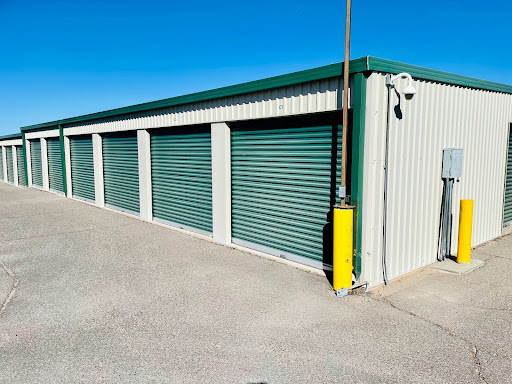
Conclusion
Estimating the costs involved in a mini storage building project is an essential part of the financial planning process. By understanding the fundamentals of mini storage buildings, considering different cost components, exploring financing options, implementing cost-saving strategies, and staying informed about future trends, investors can make informed decisions and maximize the returns on their investments. With technological advancements and market dynamics shaping the future of the mini storage industry, staying ahead of the curve is crucial for success in this evolving market.
With 24+ years experience, SteelCo dropships pre-engineered metal building (PEMB) materials nationwide and provides commercial construction services in Georgia and TN. We offer tailored design-build services for a range of material and building types across the industrial, retail / mixed-use, manufacturing and distribution, self-storage, commercial, and other sectors.
———
Frequently Asked Questions
How much does a storage project cost?
Estimating the cost of a storage project can be challenging due to potential customizations from different clients. A rough estimate for a storage facility in 2024 ranges from $17 to $20 per square foot for PEMB materials. It cost $6 to $10 for building erection, and approx. $110 to $150 per sq ft for full construction cost (including materials and construction, for projects under 100k SF). This estimate can vary significantly depending on supply and demand dynamics, as well as other market factors.
What is the profit margin on self storage?
The profitability of a self-storage business depends on several factors, including location, operational efficiency, and the range of services offered. A typical self-storage facility generates a profit margin of around 41%.
How much land do you need for a steel mini storage building?
The land needed for a steel mini storage building varies based on the facility’s design and capacity. A standard building size follows a 5’ x 5’ grid, with increments of 5’ in width and 10’ in length. Allocate adequate space for drive aisles (25 feet for parallel drives and 30 feet for cross aisles). For instance, a common building size of 30’ x 150’ requires additional space for operational efficiency and customer convenience. Consulting with a specialist can provide a tailored assessment, ensuring compliance with zoning laws and optimizing land use.
———
Check out these related articles:
> Prefab Warehouse Costs: Affordable Solutions For Storage Needs
> All About Hay Storage Buildings
> Blueprints For Success: Self Storage Building Plans
> Estimating Mini Storage Building Costs: A Financial Overview









